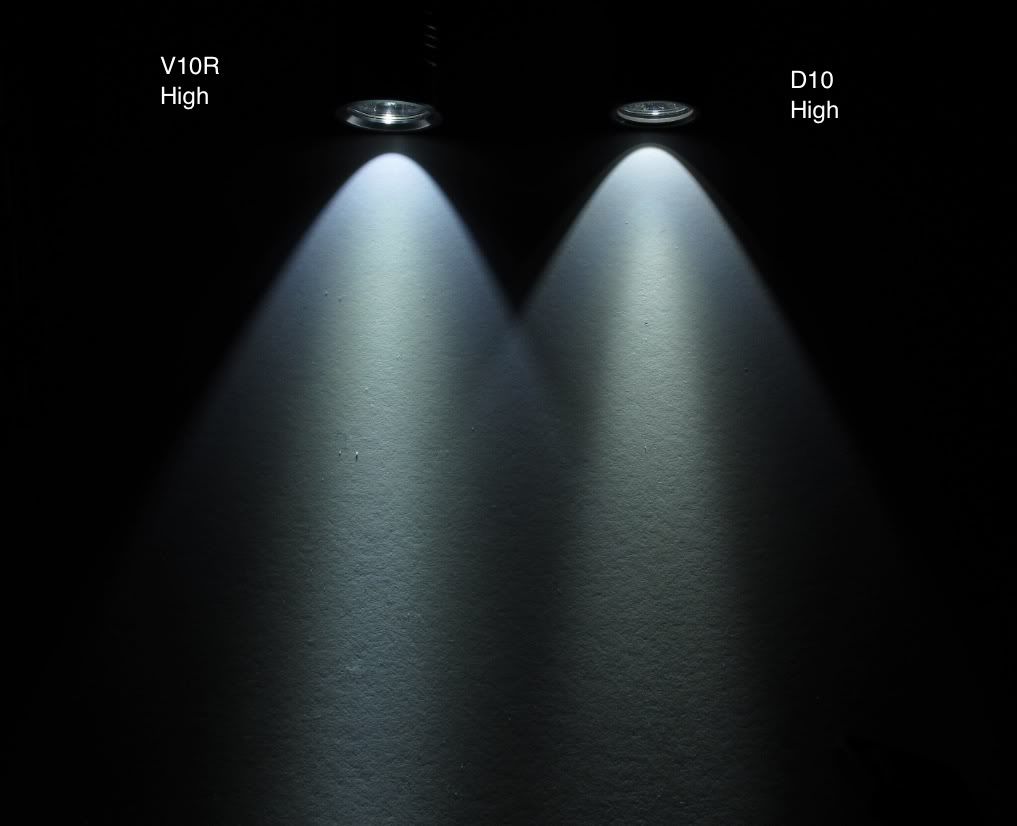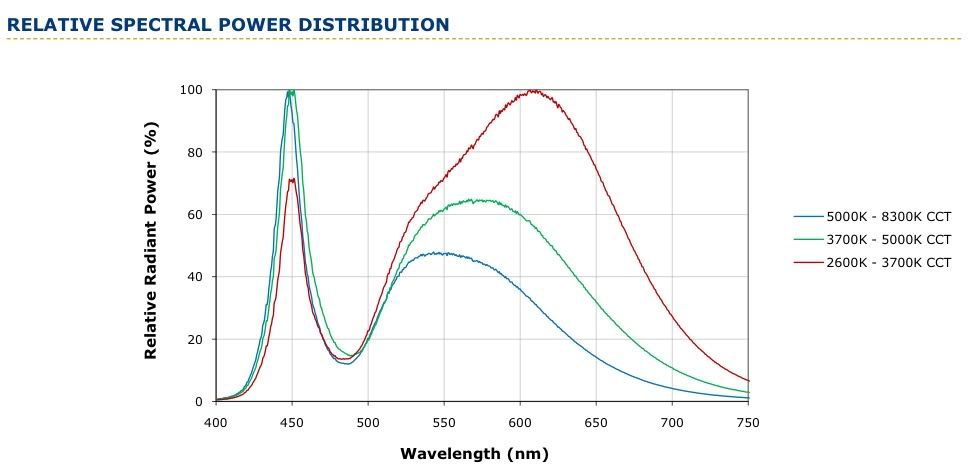For those who are really into tint (as opposed to those who just don’t want an ugly tint such as green) do you usually find that the less than cool white tints work as you expected?
It seems (just from reading) that many of the neutral or warm tints change their tint at reduced power levels and yet with certain sized lights the reduced power levels are probably used the most often. With cool white I don’t personally see (and haven’t read about) many problems with tint change at reduced power levels.
Is this an issue for many of you or not?
Depends on the driver! All emitters will green shift at lower currents, but only at lower currents to the emitter. Green shift isn't commonly seen in many lights at all, but when it does happen, its noticeable when placed side by side with another light, but I don't think it would totally affect the usability of a light.
Theres 2 main ways output is reduced - PWM or Current limiting.
Current limiting = reducing the current to the emitter to reduce brightness. - this is where the emitter received a reduced current drive.
- By reducing current - you will get a tint green shift as the emitter starts to turn off
- But efficiency of the emitter itself will be improved as you will be getting more lumens per watt
- Reducing current to the emitter is slightly more expensive to achieve (more components)
- It is very difficult to design a driver that is able to be current limiting, and stable across a wide range of outputs - i.e. its hard to have a true low low with the same driver.
PWM = Turning the emitter on and off quickly (PWM frequency) for a certain % of the time, but maintaining 100% current flow.
- 100% current allows the tint to be maintained
- but 100% drive also means the emitter isn't producing as many lumens per watt
- Also easier to achieve hardware wise, so its used in most drivers
- And is the easiest way to achieve low lows, because the driver is more likely to be able to remain stable. (why budget lights don't do this? because apparently no one likes low lows...)
An example I know isn't really relevant, but is a great demonstration piece is having a D10 Ramping, on a flat battery. The driver is a switch mode boost driver which has a relatively flat output current regulation (almost current regulation), but with PWM for output control.
With a flat battery that can't deliver much power, you can easily compare the difference in tint between PWM control vs current limited control.
Lets say the battery is almost dead, and can only provide enough power to keep the emitter going at 5% power. With the torch set to 5% output, you have the torch able to maintain regulation. It will be providing full 100% drive current to the emitter at 5% duty cycle.
If you then ramp the torch up to "100% power", the battery cannot deliver any more power, but the PWM part of the circuit still works, so your giving the 100% PWM duty cycle, but because of the dead battery, the driver falls out of regulation, and can only give 5% power/current.
There is a visible tint shift toward green as you move into the current limited state
I tried to take a picture of my V10R vs D10, but on screen its not as significant as I can see in real life.

Thanks for the explanation.
So, I guess this (green shift) doesn’t happen any more with warm tints than with cool tints even though I hear more people with warm tints complaining about this.
Another question for you (or anyone else). Do you find that tints (neutral or warm) matter less at lower settings? Not because of green shifting but just because at lower illumination levels our cones aren’t as stimulated and therefore we don’t see color as well.
In other words, I’m wondering just how important (or not important) a warm tint is when used on a lower setting at night. Would one even notice the color of the tint under those conditions in most cases?
I know people sometimes complain about cool white lights, when used at night, making colors appear washed out but (IMO) that’s usually got more to do with having the lights turned up too high than with tint.
Hehe, im a 4-5 tint fan. 5 is about as warm as I want to get, and the 4B from KD is about the most balanced of all tints that I can buy, while the 3s I haven't really tried, but the 4 I already feel is on the cool side for me.
BTW, many people refer to "neutral" tints, but there seems to me like theres a very Wide range of interpretations.
I like to think of tints as at least 2 axis of movement, Colour temperature - which is how much blue we have in the tint, and the other one is somewhat more of a green or pinkish bias. On the cree colour chart, its colour temp on the horizontal axis, vs the green/pink on the vertical axis.
I like to call neutral tints ones which appear to balance on both axis, but in reality, the eye can compensate a fair amount and many tints of "white" can appear white. Its more contextual, comparing to a incan light, or to midday sun, or evening sunlight. I tend to compare against indoor light during the day, and the 4 tints really work well in this context, while the 5 tints feel too warm. At night however, against the "warm/neutral" tinted fluros the 5 tint feels more "neutral"
Outdoors however, the 5 tints do bring out the warmer colours better, and to my eyes, just feels nicer on the eye, with better contrasts on trees/plants/leaves.
For this reason, I have not bought any more 4 tint emitters, sticking to my 5 tint stuff. Especially when both are available in R4 bin XP-Gs.
Anyway, to answer your questions, yes this tint shift business occurs to all emitters, but its probably the neutral/warm tint people that are more sensitive to tint in the first place, and possible "tint snobs" to start with. Your NANJG driver will not exhibit any tint shifting because its purely a PWM based output control driver, which is always delivering 100% current to the emitter. (I believe it is)
At lower levels, how low are we talking, and how far. Essentially, I think we are talking about levels so low, that were using the rods of our eyes. Yes the rods are not able to differentiate colours, but if we are shining on stuff in the woods, then yes, a warmer tint will still show up better because of 2 reasons - Our eyes are more sensitive to the lower wavelengths (green, yellow, reds), and the stuff we are shining out light on, trees for example, reflect more light in the green, yellow, red wavelengths because this is the colour they appear.
Below is the relative spectral distribution - i.e. the amount of each wavelength that is produced from each colour temperature of emitters. If we compare emitters of the same Output bin, say a cool white vs neutral white R4, then the output of the neutral white will have proportionally more output in the wavelengths that correspond to our happy greens, yellows and reds. If we are using an emitter with a lower output bin, then the benefit may be balanced our or negated...

Ok, so at low light levels (or long distances), we won't be using our cones, and therefore we can't even see tint! End of the day, its the amount of light that comes back at us that matters, and how sensitive we are to that wavelength. So using a warmer tint will return more light (if used outdoors), and light that we are more sensitive to (not blue), however the emitter itself will be producing less total light? (or maybe just less blue?) My point is, a neutral or warmer tint isn't necessarily better or worse by any significant margin, however on the basis of tint and general use, I would still take my neutral over a cool any day.
I believe this is the case, but I would happy be corrected.